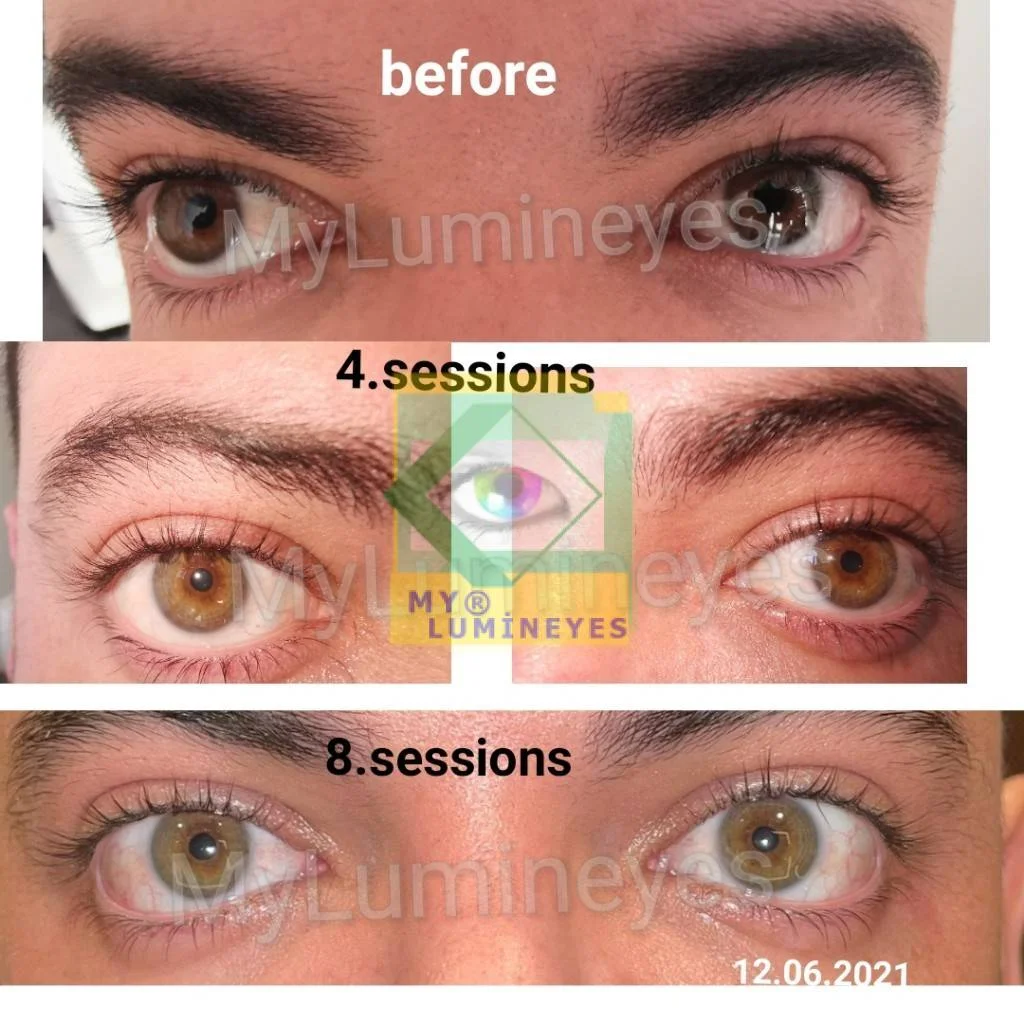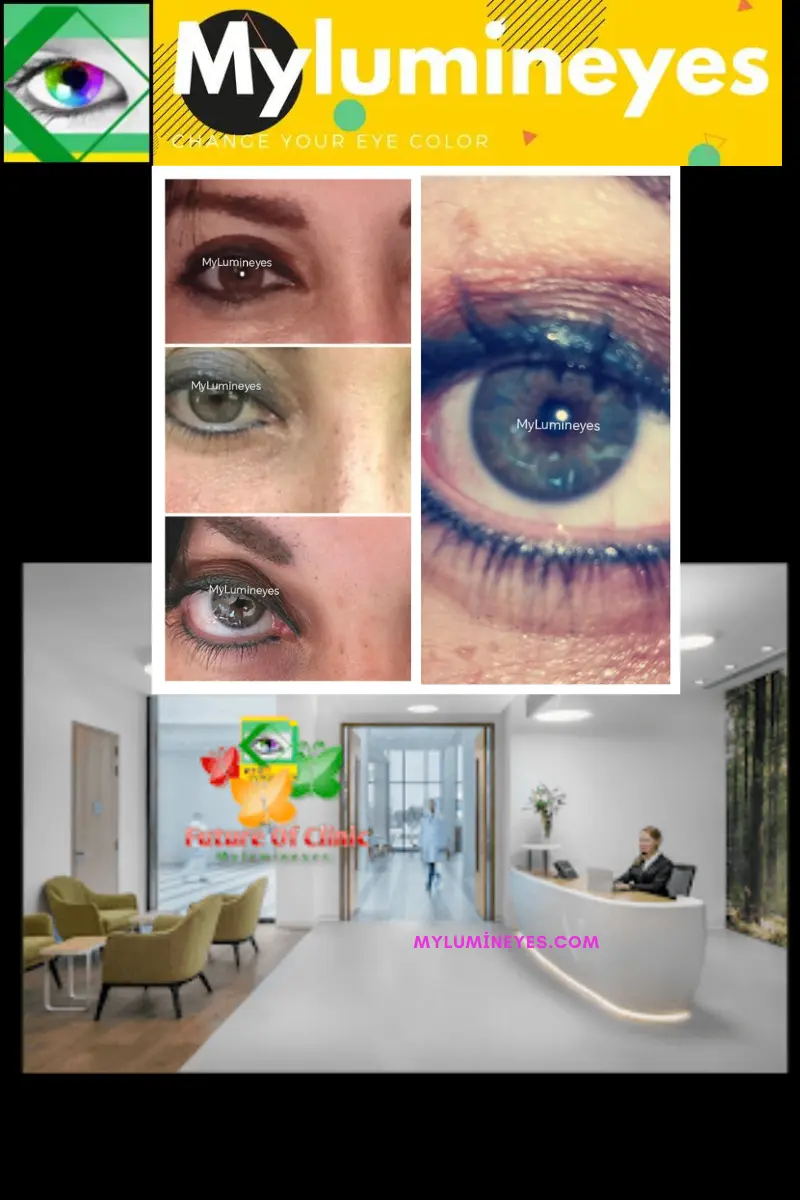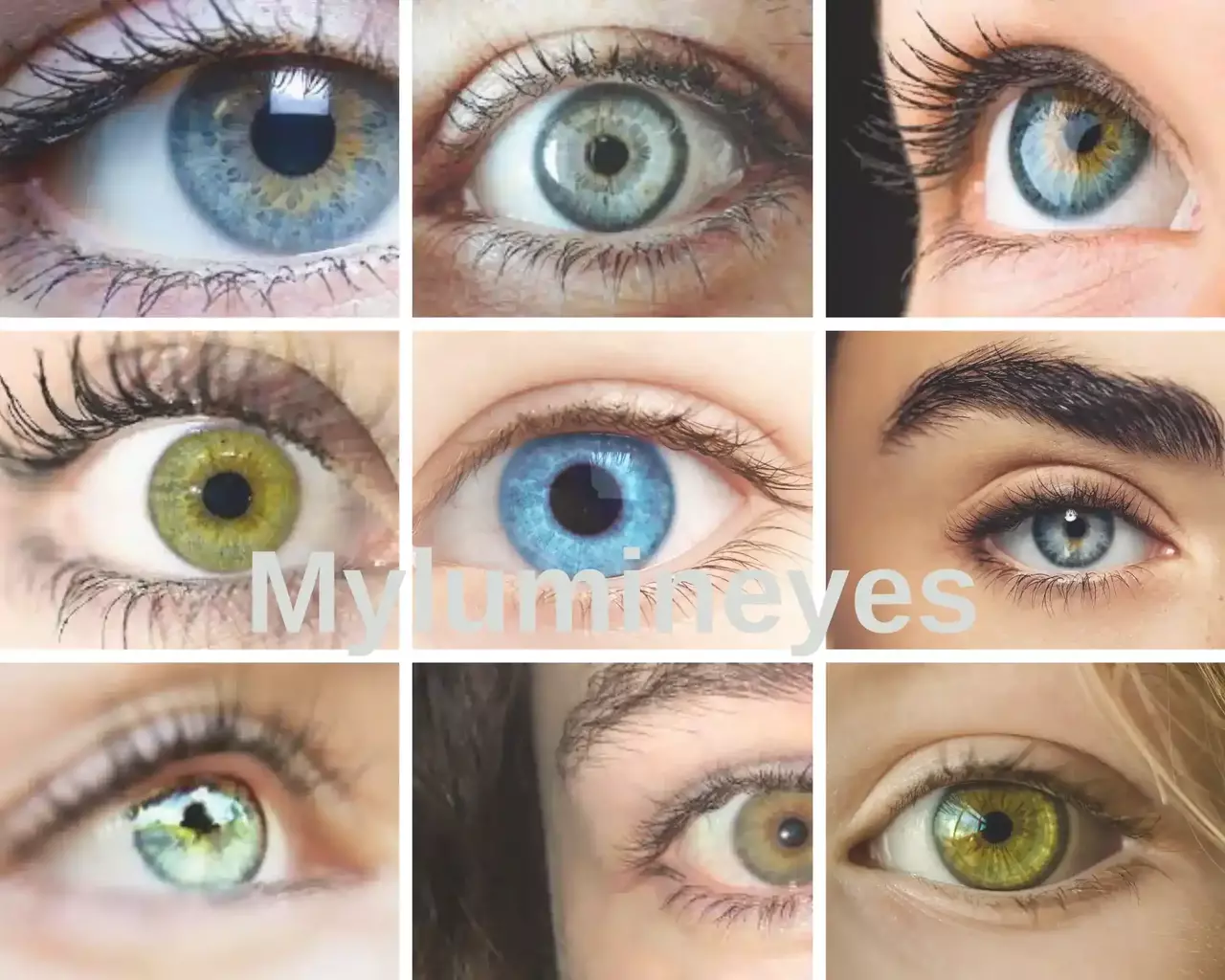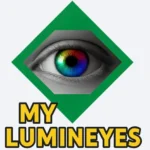Eye Color Change Guide, 2023
Is it safe for me to have surgery to change the color of my eyes? In recent years, there have been more and more people who want to change the color of their eyes. To change the color of your eyes, you can use either keratopigmentation or fake iris implants. While some people would consider this to be a minor cosmetic improvement, others have voiced worries about the long-term consequences and safety of such eye color changing procedures. Opponents caution of possible hazards including infection, vision loss, and even blindness while supporters contend that it is a personal decision that may increase self-confidence. Just as with any medical operation, before deciding, it is crucial to thoroughly consider the advantages and disadvantages. Here we will also assess the non-surgical lumineyes therapy.

Let’s talk describe how to change the color of your eyes?
People were fascinated by the idea of changing the color of their eyes for a very long time. Before Lumineyes developed its eye color-changing laser technology, keratopigmentation was a therapy for iris and eye damage. On the other hand, the disadvantages and hazards connected with both iris implant surgeries gave rise to the Lumineyes laser eye color change technology. Lumineyes is the only organic method to change the color of your eyes these days.Patients who had surgery to change the color of their eyes are happy with the outcome and experienced minimal problems. Lasers can actually change the color of your eyes through changes to the iris melanin. Before you decide to have surgery, it’s important to consider the pros and downsides. Some people might experience temporary changes in their vision or some discomfort after surgery, while others might develop cataracts or glaucoma.
Have you ever wondered why some people decide to change their eye color?
Lots of people discuss changing the color of their eyes. One inherits their eye color. We refer to the colorful part of the eye as the iris. The brightness of the surrounding environment influences the dilatation and constrictions of the iris muscle. The light refraction of these pigments determines the hue, saturation, and value of the apparent color. Value and saturation represent the amount (brightness) of color; hue represents its gradient.There are variations and natural changes in eye color.Changes in the pupil diameter, which influences the spacing between pigments, may cause naturally occurring color variations in the iris.
The color of an eye may be influenced by age, sun exposure, emotions, clothes, cosmetics, food, and illnesses. Variations in melanin synthesis or even degeneration may cause changes in eye color as one ages. The sun may increase the creation of melanin. Sometimes, certain emotions trigger the production of a hormone that changes the size of your pupils and, consequently, the color of your eyes. The hue and saturation of a picture may change depending on the colors used in the wearer’s clothes and cosmetics. Depending on their hue, saturation, and value, several often consumed foods—like spinach, salmon, and honey—may also impact eye color.
I want to make a short-term eye color change.
Using colored contact lenses is the quickest and simplest way to temporarily change the color of your eyes. Three different colored contacts are available: obstruction, enhancement, and visibility. Opaque: Solid and opaque tint lenses are the best choice for folks with dark brown eyes who want to drastically change their eye color to a lighter one. Enhancement: Tint lenses are transparent and strong in color. Their best use is to draw attention to your eyes’ natural color. Small particles in lenses with visible tints are either light blue or green. The particles allow your natural eyes’ color to come through the lens and accent the iris. We highly recommend getting a prescription before purchasing contact lenses or eyeglasses to correct your eyesight. If you buy prescription lenses that the Food and Drug Administration has authorized for sale, you will have less chance of getting defective or unsanitary ones for your contacts or glasses.
Is it safe to permanently change the color of my eyes, and if so, how?
Among the surgical procedures that may permanently change eye color are iris implant surgery, corneal pigmentation, and laser eye color change. During iris implant eye color change operations, a synthetic iris replaces the patient’s natural one. Initially, researchers developed it as a treatment for iris anomalies such as aniridia and albinism. Permanent eye color changes for cosmetic reasons are unsafe.The FDA has banned cosmetic or non-medical iris implants in the US due to their hazard.Cataracts, eye-related corneal damage, vision impairment, or blindness. By far, changing one’s eye color has more risks of blindness and irreversible vision loss than benefits. By injecting or taKeratopigmentation, also known as corneal tattooing, is a cool procedure that involves injecting or tattooing pigment into the cornea. This can create a wide range of colors in the iris.
This method was originally created to help with corneal opacity caused by leucoma or keratitis. However, it is not recommended to use it for cosmetic eye color enhancement. It’s a semi-permanent option, but there are some risks to consider. These include light sensitivity, corneal infection, and the possibility of accidentally getting a globe through the anterior chamber.ttooing pigment into the cornea, keratopigmentation (corneal tattooing) generates different iris hues. This procedure was developed to cure corneal opacity from leucoma or keratitis, not cosmetic eye color improvement. Light sensitivity, corneal infection, and anterior chamber access may cause globe penetration with this semi-permanent option.
Laser eye color change is a procedure that involves the use of a laser beam to remove pigment from the surface of the iris, which then reveals the blue and green hues that lie behind the melanin
In 2015, the American Academy of Ophthalmology (AAO) issued a warning to the general public regarding the need for clinical trial testing in order to establish the possible safety hazards involved with using laser surgery to change eye color. The American Academy of Ophthalmology (AAO) has voiced its worry about the potential role that freeing pigment might have in the development of glaucoma, a group of eye disorders that cause damage to the optic nerve, as well as uveitis, a kind of eye inflammation.
Changing one’s eye color permanently through medical treatments is not something that should be pursued at this time since it is neither safe nor encouraged. When it comes to changing your eye color with a laser, clinical tests need to be finished first before the FDA will give its blessing to the treatment. The hazards significantly exceed the potential advantages of the surgery.
II.Types of Eye Color Change Surgery(Mete)
A-Iris implant surgery
What is iris implant eye color change surgery? Those who are missing irises or have iris damage might benefit from this surgery. An eye surgeon will cut a hole in your cornea, the transparent layer that lies in front of your iris, so they can insert a colored silicone implant. After that, the implant is unfolded so that it can cover your iris. According to studies, those who have had iris implants are more likely to have major issues. They are as follows: increased risk of glaucoma, cataracts, and corneal damage. Remarkably, these risks are rare and only affect a small percentage of patients. Besides, there might be some temporary negative consequences including light sensitivity and visual problems. Still, they usually disappear after a few days or weeks.
Iris implants are not a safe or workable way to change the color of your eyes in general!
Before having the operation, you should speak with a licenced eye surgeon and carefully consider the advantages and disadvantages. The initial purpose of iris implant surgery was to address medical conditions and traumatic damage to the eyes. Examples of iris abnormalities include aniridia, which refers to the complete absence of the iris, and coloboma, which is characterized by a partial absence of the iris.
Although the surgery was originally designed for medical reasons, its cosmetic advantages have made it quite popular. Stunning eye color change procedures may enhance your look even if your native iris is perfectly working.
Studies show that those who have cosmetic iris implant surgery run a greater chance of having problems. Explore the cutting edge realm of cosmetic iris implant surgery, a treatment that has generated discussion among medical experts. Though experts are still looking into it, this ground-breaking technique has a lot of promise for those looking for something different and customized. One worry is the paucity of data on the safety and efficacy of the process.

B-Laser Eye Color Change without Surgery (Mete)
If you’d want to change the color of your eyes but aren’t sure you want to have surgery, laser eye color change can be something to think about. In this non-invasive treatment, your iris’ pigmentation is altered using a specialised laser to produce an eye color change that seems natural. No incisions or foreign items have to be placed into the eye, unlike with conventional iris implants.
It is noteworthy, although, that laser eye color alterations are permanent and may need touch-up procedures in the ensuing years. Furthermore, before deciding, as with any medical operation, there are possible hazards and side effects that should be carefully taken into account. Seeking for a reliable and knowledgeable practitioner who can walk you through the procedure and assist you in deciding whether laser eye color change is appropriate for you is essential.
Through permanent eye color modification via laser surgery, people may change the pigmentation of their irises from their natural brown color to shades like blue, green, hazel, or gray.
With the use of laser technology, you may safely and non-invasively change the color of your eyes from their natural state.
Dr. Mustafa Mete created the “Turkey Laser Eye Color Change” technique some years ago using a unique “iris selective laser.” Because it carefully targets pigment cells while guaranteeing safety and efficiency, the Lumineyes laser is regarded as the best way to achieve permanent change of eye color. (Metere)
The laser procedure will turn your eyes blue for ever. It’s important to do extensive study on the operation and any possible hazards and advantages before deciding on laser eye color change. You can decide with knowledge if you speak with a reliable eye care specialist who has performed this kind of operation before.
Many people have had their dreams fulfilled by the wonderful results of the laser eye color change surgery.
Choosing laser treatment over surgical correction of eye color might be beneficial to your health and help to maintain your natural physical characteristics. Great news, this is. Your eyes will have an absolutely natural color. This is very great news. There is preservation of the integrity of your visual sense. Thirdly, there is not much chance of running across any problems. Such an effect is made possible by the amazing Lumineyes laser color change surgery. Without a doubt! It is possible to change the color of your eyes healthfully and organically.
The present issue is proposed to be resolved using the LuminEyes laser-based therapy to change eye color.
Though the procedure has a lasting effect, carefully consider whether having green eyes is really what you want. Take care to find out from your physician any potential hazards or adverse effects from the procedure as well. Ultimately, deciding to get laser eye color change surgery should be done carefully and after speaking with a trustworthy professional.
C-Keratopigmentation or corneal tatooing
Keratopigmentation, also known as laser eye color change, is a surgical procedure for enhancing eye appearance. This procedure involves tattooing the cornea with a specialized pigment to alter the color of the iris. It is typically used for cosmetic purposes or to correct eye conditions such as heterochromia. Despite its possible hazards, which include dry eyes, infections, and vision loss, LASIK physician Dr. Mete does not favor this approach. A laser cut made in the cornea and the formation of a dye tube are the two steps in the keratopigmentation procedure. It is a possible course of therapy for blind people or those who have had eye injuries.
Keratopigmentation is a permanent treatment, however, and there is a much higher chance of astigmatism after surgery, which could potentially worsen vision rather than improve it. Additionally, the long-term effects of the dye used in the procedure are not yet fully understood, raising concerns about potential complications down the line, which reduces visual clarity. When having keratopigmentation, it is important to weigh the usual surgical risks, side effects, and inadequate cosmetic results. It will need further study to ascertain the effectiveness and safety of this cosmetic procedure.
Selecting a reliable and reputable eye clinic will enable you to understand the process and decide if laser eye color change is right for you. Consulting with a qualified ophthalmologist before undergoing the procedure is essential to ensure that it is suitable for your individual eye health needs. It is important to carefully consider all potential risks and benefits before making a decision about a laser eye color change. They could also advise on alternate options, including cosmetics or colored contact lenses, that might provide comparable results with less possible risk. The decision to get keratopigmentation should ultimately be taken after a careful assessment and discussion with a respectable ophthalmologist.
I. Dangers And Adverse Reactions
This page explores the possible dangers of eye color-change procedures, provides first-hand reports of negative effects from these operations, and makes suggestions for other ways to improve ocular appearance.
Make an appointment with an ophthalmologist or other eye specialist as soon as possible if you have any problems after eye color change surgery. No matter how little a vision loss, it should be taken seriously as it may be a symptom of a serious yet common eye condition or disease that might endanger the patient’s eyesight.
By early diagnosis and treatment, your eye doctor may be able to help you avoid controlled vision problems from becoming permanent blindness. The initial stage in reversing or preventing the eyesight loss that followed a therapy is usually taking out the cosmetic iris implant.
1. Loss of vision
is a grave problem with a potential to significantly lower quality of life. That is the reason it is crucial to act preventively and get treatment as soon as feasible. You may stop any such problems from growing worse by routinely seeing an eye doctor and receiving thorough eye examinations. A balanced diet and regular exercise are other ways that leading a healthy lifestyle might help preserve your eyesight.
There are nevertheless treatments available in situations where visual loss has already happened.Although removing cosmetic iris implants might be required to halt the course of vision loss, various therapies are also possible based on the underlying reason. Working directly with your healthcare practitioner can help you decide what is the best course of action for your specific circumstances. Your eyesight may be preserved and your quality of life extended for many years to come with the right care and attention.
2. Infection of the eyes after surgery to change their color
sometimes a major problem that has to be seen to right away. If after surgery you see any redness, swelling, or discharge from your eye, get in touch with your doctor immediately. In order to assist cure the infection and stop further eye damage, they could recommend antibiotics or other drugs. Up until it has completely healed, it is also crucial to carefully follow all postoperative recommendations and refrain from scratching or touching your eye. After having eye color change surgery, you can reduce your chance of infection and guarantee a good recovery with the right care and attention.
3. Glaucoma after cosmetic surgery to change eye color
has to be carefully watched as a possible problem. Attending all follow-up visits with your surgeon is crucial, as is reporting any changes in pain or vision right away. Complicating matters may also be avoided by keeping up excellent general eye health via routine examinations and healthy behaviors. Even though the process is generally safe, before having any elective surgery, one should consider the possible advantages and disadvantages.
In the end, choosing to change the color of your eyes should be done with much thought and after speaking with a licensed medical expert. Nevertheless, many patients may have their intended outcomes with few problems or adverse consequences if they get the right care and attention.
4.Iridocyclitis after a change in eye color
is a possible but seldom occurring major problem. To guarantee appropriate recovery and watch for any possible problems, it is crucial to adhere to all postoperative instructions and show up for all follow-up sessions. Furthermore, since the finished product could not always match the intended hue or strength of color, it is crucial to have reasonable expectations regarding the result of the operation. Overall, even although for some people elective surgery to change their eye color might be a very appealing choice, it is crucial to consider the possible advantages and disadvantages before deciding.
5. Light sensitivity after color change of the eyes
is a typical adverse effect that might linger for several weeks or even months. This could make regular tasks like driving or using a computer uncomfortable and challenging. Any surgical operation, including those used to change eye color, has a chance of infection and other problems. Examining the possible psychological effects of making such a big change to one’s look is equally crucial.
Though some people might feel more confident and happy with their new eye color, others could feel guilty or unhappy.
Almost all patients will have light scattering issues following iris implant surgery and keratopigmentation because of nighttime pupil expansion. As there is no foreign material in the eye during the Lumineyes laser eye color change treatment, light scattering from pupil expansion is not seen.
Ultimately, choosing elective laser eye color surgery should be done in conjunction with a licenced opthalmologist and after carefully weighing all the advantages and disadvantages.
IV. Alternatives to Surgery to Change Eye Color.
Colored contacts
Colored contact lenses are an alternative for elective eye color surgery. These lenses come in a variety of colors and can be used every day or on special occasions. They are a non-invasive option that allows patients to change the color of their eyes without undergoing surgery. However, it is important to realize that incorrect contact lens maintenance carries its own set of risks and difficulties, such as infection or corneal injury. Another option is to enhance the natural color of the eyes with cosmetics or colored eyeliners.
There are no medical procedures required, and this temporary solution is easily customized. It may not provide the same level of alteration as surgery or contact lenses. Before deciding to change the color of their eyes, people should carefully explore their options and consult with a professional expert.
Drops to change the color of your eyes
For anyone who wants to change the color of their eyes, eye color changing drops are a non-invasive and temporary solution. These drops create a subtle but noticeable alteration in the color of the eyes by enhancing the natural hue of the iris. Many colors can be easily applied at home. Though they may not last as long as other approaches, colored eye drops are a safe and inexpensive alternative for people who want to experiment with different eye colors. Remember not to share colored eye drops with others and to use them exactly as prescribed.
Candidates for this type of medication may not have specific medical difficulties or allergies. Overall, colored eye drops can be an easy and pleasurable way to refresh your look without making a large investment. Dr. Mustafa Mete decided that these eye-color-changing remedies are no longer effective and may possibly injure the eyes. As of now, Dr. Mete cautions against utilizing eye drops.
Makeup for Green, Hazel, or Blue Eye Colour
Better and safer is to improve or change the color of one’s eyes. With so many eyeshadows, eyeliners, and mascaras on the market, it’s easy to create a stunning look that either accentuates one’s natural eye color or creates a whole new appearance. Colored contact lenses are another option for people who want to change the color of their eyes temporarily.
These lenses come in a variety of colors and can be used every day or only for special occasions. However, before wearing any type of contact lens, it is critical to consult with an eye specialist to ensure a proper fit and avoid any eye injuries. To summarize, while it may appear enticing, utilizing drops to change the color of one’s eyes is not a safe or practical option right now. Makeup or colored contact lenses are ideal for achieving the desired look while protecting your eyes.
Can people naturally change the color of their eyes at home?
Your eyes may appear different due to several medical issues. They can dilate the pupil, allow blood into the eye, or encircle the cornea in a ring. They have little effect on the color of iris flowers. Some do, however.
These are the most frequent disorders, although they are not the only ones that might cause an obvious change in eye color. Such changes could be the outcome of exceedingly unusual events. Obviously, if you notice any problems, you should see an ophthalmologist. This applies whether your eyes appear different or if you observe changes in your vision. Consult your doctor if any of these changes occur. Clouding, an unusual ring around the cornea, new spots on your iris, or even a general change in the color of your eyes or iris can all be signs of a medical disease that requires treatment.
Conclusion of treatments for changing the color of eyes
An iris color is altered during an eye pigment removal surgery. Though it can also be performed to cure certain medical concerns, cosmetic reasons are the main purpose for this surgery. Seek medical attention if you notice any changes in the color of your iris, such as clouding or new spots. Your doctor can advise you on the best course of action, including whether eye color change surgery is necessary. During the process, a small incision is made in the cornea to insert a colored implant into the iris.
The operation, which typically takes less than an hour, can be conducted as an outpatient. Though it may appear to be a simple cosmetic surgery, eye color change surgery should only be performed by a licensed surgeon who specializes in this field.
Is eye color surgery safe and ethical?
Several surgical methods have been suggested for managing patients who desire a voluntary and enduring changing of their eye color. The issue of changing one’s eye color is often discussed. This critique holds significance in aiding medical professionals and individuals in making informed decisions regarding surgical options. It entails comprehending the current advancements and efficacy levels of each alternative, as well as any potential complications that may arise.
The amount of pigmentation (melanin) present in the iris determines an individual’s eye color, which has a hereditary component. The hue, saturation, and value of the perceived color are all determined by how light reflects off of these pigments. Eye color is subject to natural variations and changes, such as changes in the diameter of the pupil, age, emotions, cosmetics and clothing, diet, and diseases.
The medical use of laser iris depigmentation, also known as Lumineyes laser eye color change procedure, is primarily intended for cosmetic reasons and heterochromia
However, there is a dearth of literature available on this particular treatment. The introduction of this type of therapy was founded on the favorable cosmetic outcomes that were noted in the management of oculodermal melanocytosis and the dermatological therapy for cutaneous pigmentation. The laser treatment under consideration could possibly change the color of the eyes by diminishing or eradicating the melanin colored pigmentation present on the outermost portion of the iris. It is important to note that the patient’s choice of eye color is not a viable option as the procedure solely exposes the inherent stromal fibers. Moreover, it is not feasible to transform blue eyes into green or vice versa using this technique.
It is quite natural that some experts, who have little knowledge about it, make negative comments on this subject, but it is a fact that they have never seen or applied this procedure.
Dr. Mete is preparing to publish a study of more than 1000-odd cases with long-term records and observations for Lumineyes, which has been developed for about 14 years, as a scientific article. When the Lumineyes and Lumineyes Xtra methods are applied by experienced ophthalmologists, they cause almost no risk or health problems! It has many times lower risks and complications than, for example, cataract or lasik surgery. And yes “laser eye color change surgery with lumineyes technique is very safe!
We see no need to re-disclose the potential risks associated with surgical options other than lumineyes (keratopigmentation and iris implant).
Using colored contact lenses is the quickest and most convenient way to “temporarily” change the color of your eyes.
There are three different shades available for colored contacts: opaque, enhancement, and visibility. Opaque: tint lenses are solid in color and non-transparent, while enhancement: tint lenses are solid in color and transparent. Visibility: Tint lenses are solid in color and transparent. Visibility tint lenses are most effective when used to accentuate the color of your eyes in their natural state. It is highly suggested that you get a prescription before buying eyeglasses or contact lenses for the purpose of correcting your eyesight.
Iris implant surgery is a medical operation that replaces a patient’s natural iris with a synthetic one
The FDA has outlawed this practice in the United States due to safety concerns. Keratopigmentation is a procedure in which pigment is injected or tattooed into the cornea in order to produce the appearance of a variety of colors in the iris. Although keratopigmentation was initially used to treat corneal opacity brought on by leucoma or keratitis, The keratopigmentation surgery technique is not advised for changing the color of the eyes for cosmetic reasons. There are articles by Dr.Mete reporting very important warnings and risks before on this subject.
Laser eye color change is a permanent procedure that involves the use of a laser beam to remove pigment from the surface of the iris, revealing the blue and green hues behind the melanin.
This particular method changes the colors of one’s eyes by means of eliminating the pigmented cells located in the iris. The phenomenon of brown eyes appearing blue when an individual is absent is observed. The lack of pigment is the reason why blue eyes are observed. The procedure is limited to brown irises. Similar to any surgical procedure, there exist potential adverse effects. Glaucoma and uveitis are among the conditions under consideration.
In 2015, the American Academy of Ophthalmology (AAO) issued a warning to the general public regarding the need for clinical trial testing in order to establish the possible safety hazards involved with using laser surgery to change eye color.
The AAO has voiced its worry about the potential role that freeing pigment might have in the development of glaucoma and uveitis. Changing one’s eye color permanently through medical treatments is not something that should be pursued at this time since it is neither safe nor encouraged. Clinical tests need to be finished before the FDA will give its blessing to the treatment. Despite all this, Dr.Mete proves that Lumineyes does not cause glaucoma by performing a laser eye color change on a glaucoma patient.
Eye color change is safe and effective without surgery and with an experienced doctor.
As a result, the eye color change procedure is relatively useful and safe. For this, three factors are very important:
1. Past experience and knowledge of the ophthalmologist
2. Advantages and disadvantages of the method which used in changing eye olor
3: Choosing a clinique with years of experience for this process
When considering a change in eye color, it is crucial to consult with an experienced ophthalmologist. This procedure can be both useful and safe, but only if certain factors are taken into account. Firstly, the doctor’s past experience and knowledge are essential in ensuring the success of the procedure. Secondly, it is important to weigh the advantages and disadvantages of the method used in order to make an informed decision. Finally, choosing a clinic with years of experience and expertise in this process can greatly increase the chances of a positive outcome. By taking these factors into consideration, individuals can feel confident in their decision to undergo a change in eye color.





Watery eyes,Blocked tear duct and Laser
Watery eyes,blocked tear duct and Laser What is the meaning of “tear duct blockage or clogged tear duct”? Tears function










